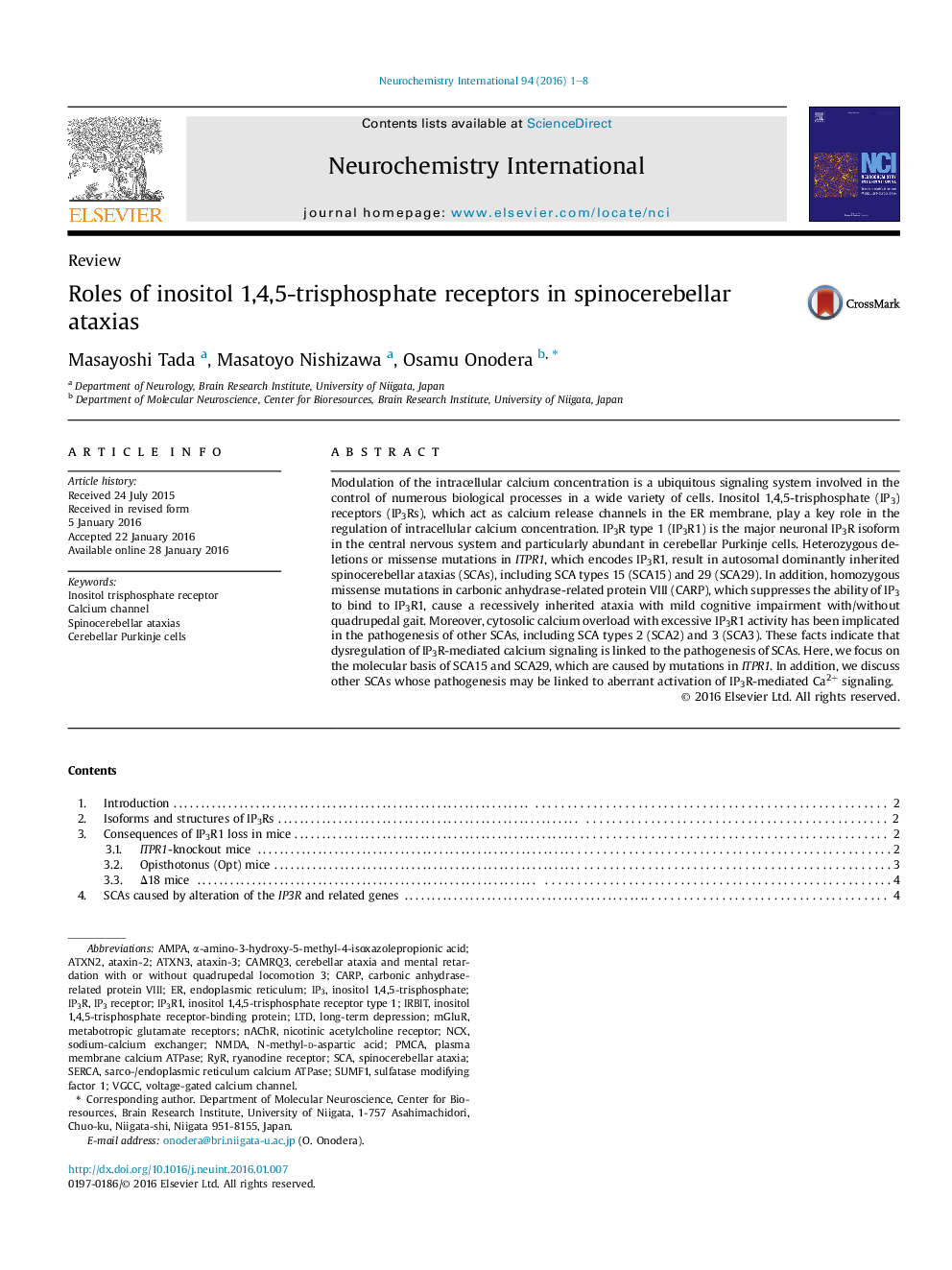| کد مقاله | کد نشریه | سال انتشار | مقاله انگلیسی | نسخه تمام متن |
|---|---|---|---|---|
| 2200352 | 1551281 | 2016 | 8 صفحه PDF | دانلود رایگان |

Modulation of the intracellular calcium concentration is a ubiquitous signaling system involved in the control of numerous biological processes in a wide variety of cells. Inositol 1,4,5-trisphosphate (IP3) receptors (IP3Rs), which act as calcium release channels in the ER membrane, play a key role in the regulation of intracellular calcium concentration. IP3R type 1 (IP3R1) is the major neuronal IP3R isoform in the central nervous system and particularly abundant in cerebellar Purkinje cells. Heterozygous deletions or missense mutations in ITPR1, which encodes IP3R1, result in autosomal dominantly inherited spinocerebellar ataxias (SCAs), including SCA types 15 (SCA15) and 29 (SCA29). In addition, homozygous missense mutations in carbonic anhydrase-related protein VIII (CARP), which suppresses the ability of IP3 to bind to IP3R1, cause a recessively inherited ataxia with mild cognitive impairment with/without quadrupedal gait. Moreover, cytosolic calcium overload with excessive IP3R1 activity has been implicated in the pathogenesis of other SCAs, including SCA types 2 (SCA2) and 3 (SCA3). These facts indicate that dysregulation of IP3R-mediated calcium signaling is linked to the pathogenesis of SCAs. Here, we focus on the molecular basis of SCA15 and SCA29, which are caused by mutations in ITPR1. In addition, we discuss other SCAs whose pathogenesis may be linked to aberrant activation of IP3R-mediated Ca2+ signaling.
Journal: Neurochemistry International - Volume 94, March 2016, Pages 1–8